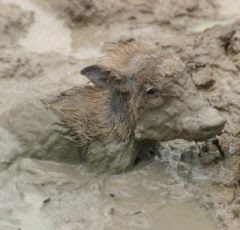A man visits an old-growth cedar during a walk along the border of North Cascades National Park. The Pacific Northwest was once covered with such huge trees.
Large old trees are among the biggest organisms on Earth. They are keystone structures in forests, woodlands, savannas, agricultural landscapes, and urban areas, playing unique ecological roles not provided by younger, smaller trees. However, populations of large old trees are rapidly declining in many parts of the world, with serious implications for ecosystem integrity and biodiversity.
“Big, old trees are not just enlarged young trees,” said Jerry F. Franklin of the University of Washington, a co-author of the study who has studied old-growth forest for 45 years. "Old trees store large amounts of carbon, recycle soil nutrients and play a role in the flow of water and climate within an ecosystem. When a forest is disturbed by wildfire, a wind storm or other events," Dr. Franklin said, "those older trees begin the recovery process by providing seeds as well as habitat for other species that help the forest re-establish itself."
The scientists are talking about the loss of the biggest living organisms on the planet, of the largest flowering plants on the planet. The big trees, the wolf, the wild, a biodiverse ecosystem has to have'em all and countless more all intermingled, indistinguishable really, that's life.



